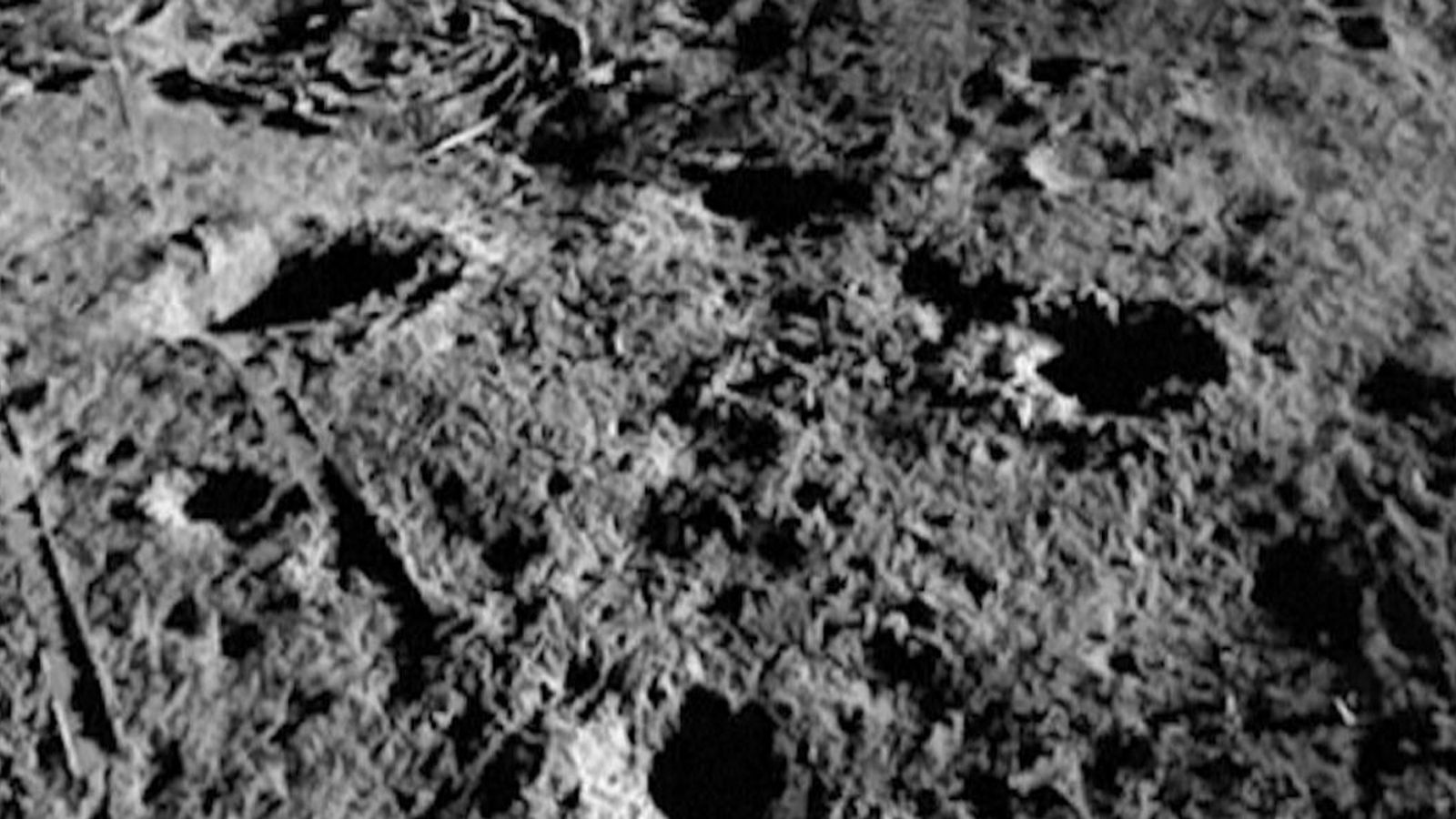Not content with making history by reaching the lunar surface’s south pole, India’s moon lander has shown off by hopping to a second soft landing.
Vikram touched down last month and deployed several bits of equipment to gather information about the terrain of the moon, chiefly a 26kg rover to collect rock samples and images.
The main objective is to confirm the presence of water ice in the south pole’s shadowed craters. If present, it could be used for drinking water, fuel, and oxygen – potentially supporting a permanent human base.
While the rover, named Pragyan, continued to roam the surface, India‘s space agency revealed on Monday morning Vikram had successfully performed a second soft landing via a “hop experiment”.
It only reached an altitude of 40cm, and moved between 30cm and 40cm, but the test was said to be a good sign for future missions that could take humans to the moon and back.
“All systems performed nominally and are healthy,” said space agency ISRO.
Before the jump, the kit Vikram had deployed – including a seismometer and probe used to dig into the surface – was brought back inside and the ramp used to deploy Pragyan was folded up.
Everything was redeployed when the lander touched back down.
Pragyan, which has travelled more than 100 metres from the lander’s initial touchdown, has now been parked and put into sleep mode until the moon’s next sunrise.
Be the first to get Breaking News
Install the Sky News app for free
It’s hoped it can kick back into life when light reaches it again on 22 September.
So far, it has confirmed the presence of sulphur and several other elements, including aluminium, iron, calcium, chromium, titanium, manganese, oxygen and silicon.
Relive India’s historic moon landing as it happened
Please use Chrome browser for a more accessible video player
August’s landing was a milestone in space exploration, as no country – the US, China, or Russia – had managed to reach the moon’s south pole before.
The mission, named Chandrayaan-3, came after a previous failed attempt by India in 2019 and one by Moscow’s Roscosmos space agency just last month.
India has since also launched its first mission to study the sun.






















